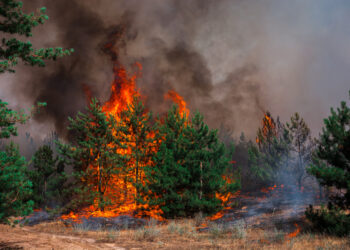U.S. ENVIRONMENTAL PROTECTION AGENCY
The U.S. Environmental Protection Agency has awarded $1,041,000 to the Montana Department of Environmental Quality to help protect human health and the environment through a Nonpoint Source Program Clean Water Act Section 319 grant. This grant is given to states to implement environmental programs that address nonpoint source pollution in surface and ground water to meet and maintain water quality standards.
“EPA is partnering with MTDEQ to restore water quality by focusing on one of the nation’s largest remaining causes of surface water impairment: contaminated runoff from nonpoint sources,” said EPA Regional Administrator Gregory Sopkin. “Water quality across the West is a high priority and by working together on these projects, our impact is that much greater.”
Nonpoint sources of pollution continue to be recognized as the nation’s largest remaining cause of surface water quality impairments. The effects of nonpoint source pollution can be seen within the lakes, streams and rivers of Montana. Common NPS pollutants include sediment, nitrogen, phosphorus, metals, pesticides, pathogens, petroleum products and salts.
Nonpoint source pollution encompasses a wide range of sources that are not subject to federal or often state regulation. These sources include agricultural runoff, unpermitted urban runoff, abandoned mine drainage, failing onsite disposal systems and pollution caused by changes to natural stream channels.
“This funding allows DEQ to make important investments in projects, which will improve water quality in Montana,” said MTDEQ Director Shaun McGrath. “Nonpoint source pollution is one of the most challenging issues facing Montana waters. We are grateful to EPA for this funding, which the state will use for locally-led projects, working together with our community partners, including land owners, local watershed groups and conservation districts.”
Under this program, a total of seven proposals were selected for funding that will restore natural processes such as stream channel migration, floodplain connectivity and native riparian revegetation. These projects will result in measurable improvements in water quality.
The program is based on principles that emphasize voluntary and incentive-based participation. MTDEQ seeks to involve stakeholders through communication cooperation and common goals.
This grant is one part of EPA’s overall effort to ensure America’s waters are clean and safe. This year, EPA is distributing more than $165 million in section 319 grants to states, territories and tribes to reduce nonpoint runoff in urban and rural settings, including efforts to reduce excess nutrients that can enter our waters and cause public health and environmental challenges.
Over the last two years, states restored over 80 waters and reduced over 17 million pounds of nitrogen, nearly 4 million pounds of phosphorus and 3.5 million tons of excess sediment through section 319 projects. The 319 grants received by Montana complement thousands of additional dollars awarded to the state to carry out multiple programs that protect water quality including wetlands protection, restoration and water pollution control programs as well as $7.8 million in wastewater infrastructure funding for Clean Water Act State Revolving Fund.
Congress enacted Section 319 of the Clean Water Act in 1987, establishing a national program to control nonpoint sources of water pollution. Through Section 319, the EPA provides states, territories and tribes with guidance and grant funding to implement their nonpoint source programs and to support local watershed projects to improve water quality. Hundreds of additional projects are underway across the country.
To learn more about successful nonpoint source projects, visit epa.gov/nps/nonpoint-source-success-stories.













